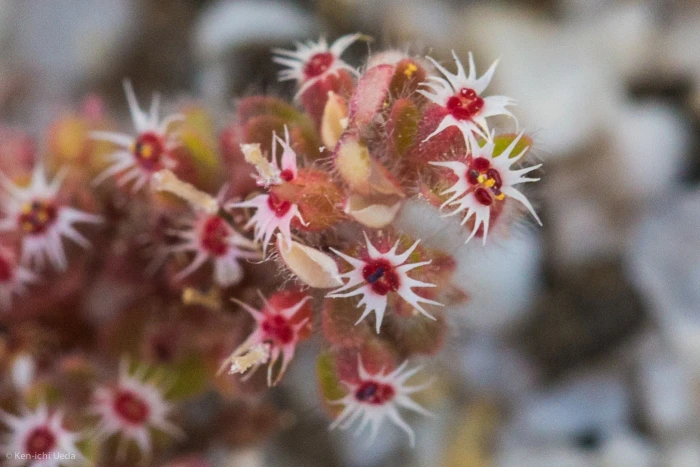Yuma Sandmat
(Euphorbia setiloba)
Yuma Sandmat (Euphorbia setiloba)
/
/

Ken-ichi Ueda
CC BY 4.0
Image By:
Ken-ichi Ueda
Recorded By:
Copyright:
CC BY 4.0
Copyright Notice:
Photo by: Ken-ichi Ueda | License Type: CC BY 4.0 | License URL: http://creativecommons.org/licenses/by/4.0/ | Rights Holder: Ken-ichi Ueda | Publisher: iNaturalist | Date Created: 2017-03-12T13:48:46-07:00 |

























Estimated Native Range
Climate Requirements for Germantown, Maryland
| This Plant | Your Site | Plant Suitability for Your Location | ||
|---|---|---|---|---|
| • Precipitation | 2" - 30" | 41" | Aquatic | Aquatic |
| • High Temp. | 81°F - 113°F | 87°F | Your summer temperatures are normal for this plant. | Excellent |
| • Low Temp. | 16°F - 53°F | 23°F | Your winter temperatures are normal for this plant | Excellent |
This plant may not grow well at your location - your precipitation is too high.
Summary
Euphorbia setiloba, commonly known as Yuma sandmat, is an annual herb native to desert washes and sandy flats in the southwestern United States and northern Mexico. It is a small, clumping plant with slender stems that typically grows to a height of 2-4 inches (5-10 cm). Yuma sandmat has tiny, hairy leaves and minute inflorescences that are not particularly showy, with the ovary of the female flower developing into a small, hairy, spherical fruit. The plant’s inconspicuous greenish flowers bloom in the spring and early summer.
Yuma sandmat is adapted to extreme desert conditions, requiring minimal water once established and thriving in well-drained, sandy soils. It is often used in xeriscaping and as a ground cover in desert gardens, where its drought tolerance and low stature make it a practical choice. While not widely cultivated, it can provide textural contrast in rock gardens or naturalized areas. It prefers full sun and can tolerate high temperatures and direct sunlight. Gardeners should be aware that Euphorbia setiloba, like other members of the Euphorbia genus, contains a milky sap that can be irritating to skin and eyes.CC BY-SA 4.0
Yuma sandmat is adapted to extreme desert conditions, requiring minimal water once established and thriving in well-drained, sandy soils. It is often used in xeriscaping and as a ground cover in desert gardens, where its drought tolerance and low stature make it a practical choice. While not widely cultivated, it can provide textural contrast in rock gardens or naturalized areas. It prefers full sun and can tolerate high temperatures and direct sunlight. Gardeners should be aware that Euphorbia setiloba, like other members of the Euphorbia genus, contains a milky sap that can be irritating to skin and eyes.CC BY-SA 4.0
Plant Description
- Plant Type: Succulent
- Height: 0.1-0.2 feet
- Width: 0.5-1 feet
- Growth Rate: Moderate
- Flower Color: Pink, White
- Flowering Season: Spring, Summer
- Leaf Retention: Evergreen
Growth Requirements
- Sun: Full Sun
- Water: Low
- Drainage: Fast, Medium
Common Uses
Drought Tolerant, Low Maintenance
Natural Habitat
Native to desert washes and sandy flats in the southwestern United States and northern Mexico
Other Names
Common Names: Bristlelobe Spurge, Fringed Spurge, Shaggy Spurge
Scientific Names: Euphorbia setiloba, Chamaesyce setiloba, Chamaesyce setiloba, Euphorbia floccosiuscula, Euphorbia setiloba
GBIF Accepted Name: Euphorbia setiloba